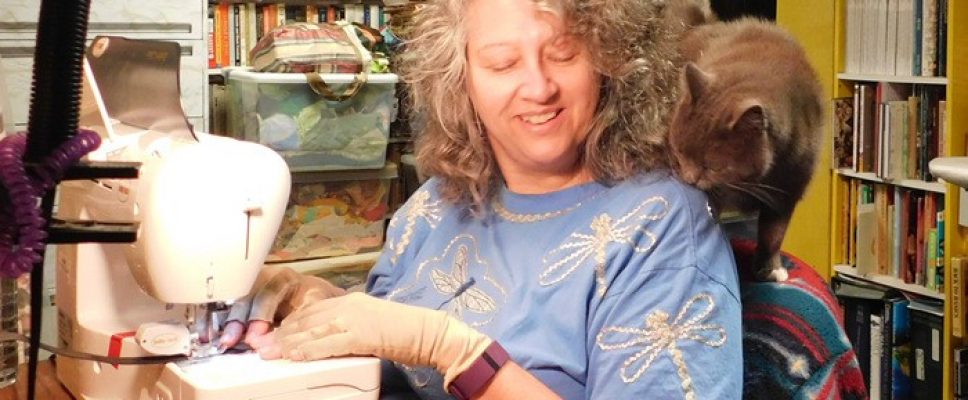Teresa to Teach How to Origami Grocery Bags
I recently published my second book, and I’m really proud of it.
“Sew Cloth Grocery Bags: Make Your Own in Quantity for Yourself, for Gifts, and for Sale” took several years of work, sewing and writing down the instructions as I went, learning two styles of grocery bag manufacturing (“boxed” and “tailored”), teaching myself production sewing, taking loads of photographs, drawing fabric layout charts … the list never ended.
 Then it was time to rewrite. More time spent. Bill edited the manuscript into submission. I sent the manuscript to my six beta sewers. Boy oh boy, did they find mistakes and confusing instruction. I did far more rewriting along with discovering a serious need for construction diagrams.
Then it was time to rewrite. More time spent. Bill edited the manuscript into submission. I sent the manuscript to my six beta sewers. Boy oh boy, did they find mistakes and confusing instruction. I did far more rewriting along with discovering a serious need for construction diagrams.
After all that, Bill spent weeks laying out the pages, finding typos along the way. Who knew typos breed on their own when you’re not looking?
Finally, here we are. A finished book, ready for you to use. It’s a unique book too, since there’s nothing else like it on the market. It looks so effortless, when you see a finished sewing book in the store. I have a much better understanding now of how much work goes into the making and hard it is to write comprehensive, clear instructions.
One major issue that arose during the beta reading involved describing the exact steps to make boxed bags. A boxed bag is more efficient. It’s quicker; to lay out, to cut, and to sew. It is close to zero waste. However, unlike the three-piece tailored bag style, boxed bags are not intuitive. You have to manipulate and press the fabric as though you were doing origami with cloth.
It is not obvious how a single panel of fabric can become a three-dimensional bag in the same way the three pieces of fabric become a tailored bag. My beta sewers all agreed. Boxing the bag is a challenge.
Demonstration at Cupboardmaker
So to make it clearer, I will be at Cupboard Maker Books on Tuesday, Nov. 12, 2019, from 7 to 9 p.m. to demonstrate how to do origami with fabric and an iron. I’ll bring my sewing machine, ironing board, iron, stack of panels, notions, and trouble lights to light the work surface. I’ll box those bags, shaping the triangular wings with an iron. I’ll show how to mark the seamline, pin and sew it, and then how to flip the bag back to being right-side-out and sew the wings down, forcing the bag to maintain its shape.
I’ll be glad to answer any questions you might have. I like an audience of more than my cat, Olga. That’s her with me in the author’s photo.
You may ask why bother to make the boxed bag when the tailored bag’s is more intuitive to understand?
Because if you’re making a lot of them for gifts or for sale, boxed bags are faster. Much faster. Your time matters when you’re doing production sewing. If you don’t get fast, you lose money. You can get to be fast sewing tailored bags as you gain experience. But you will never sew them as fast as the boxed bag will let you.
The trick is learning how to do that origami fold. Once you learn that step, you’ll blaze away and make stacks of bags.
Join us at Cupboard Maker Books and learn how!
